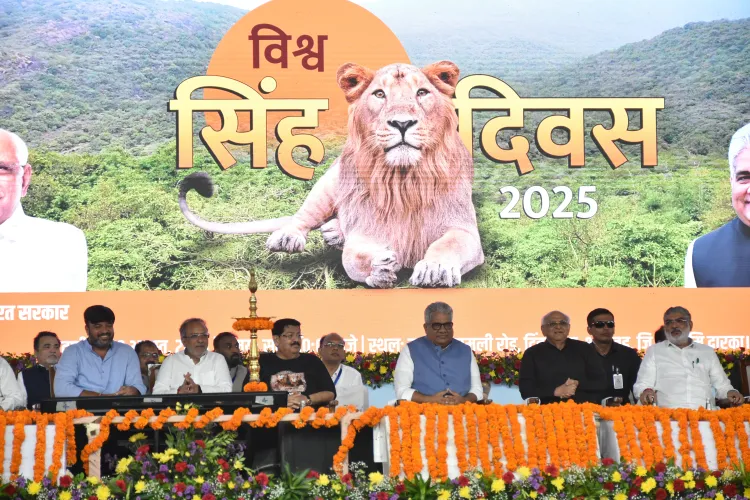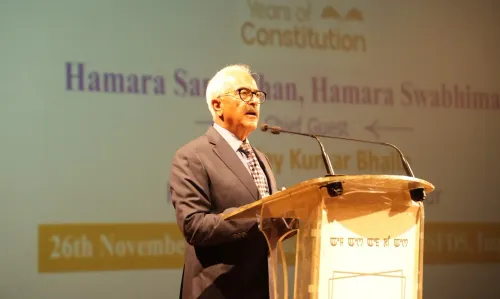Guj: Did the Barda Wildlife Sanctuary Celebrate a Grand ‘World Lion Day’ with a Rs 180-cr Development Push?

Synopsis
Key Takeaways
- Gujarat's conservation efforts have led to the successful return of the Asiatic lion to Barda after 143 years.
- A substantial Rs 180 crore development plan was announced to enhance tourism and conservation.
- The Asiatic lion population has significantly increased, showcasing effective conservation strategies.
- Local communities play a vital role in coexisting with wildlife, promoting harmony between humans and lions.
- Projects like Project Lion highlight India's commitment to wildlife protection.
Ahmedabad, Aug 10 (NationPress) The celebration of ‘World Lion Day’ at Barda Wildlife Sanctuary was graced by Gujarat Chief Minister Bhupendra Patel and Union Environment Minister Bhupender Yadav. This event marked a significant milestone with the Asiatic lion's return to the area after 143 years. During his address, CM Patel hailed the Asiatic lion as “a global symbol of India’s identity” and announced the e-launch and foundation stone-laying for various forest department initiatives valued at Rs 180 crore.
Among these initiatives is a Rs 75-crore safari park and improved tourist amenities in Barda, along with new vehicles, rescue facilities, and community development projects. CM Patel highlighted the success of conservation efforts, noting that lion habitats have expanded from 3 to 11 districts over the last 25 years, with the lion population increasing from 674 in 2020 to 891 in 2025.
He credited Prime Minister Narendra Modi’s “Project Lion” for effectively addressing habitat management, wildlife health, human-wildlife conflict, tourism, and biodiversity preservation. Union Minister Yadav commended the state’s conservation achievements, referring to the lion’s natural return to Barda as a “boost to biodiversity and eco-tourism.” He emphasized India's broader wildlife protection efforts, which include Project Tiger, Project Dolphin, and the newly established International Big Cat Alliance.
State Forest Minister Mulu Bera described Barda as the Asiatic lion’s “second home” and provided details on new projects, including breeding centers and eco-tourism portals for booking visits to 24 locations across Gujarat. The event saw attendance from officials, lawmakers, and hundreds of local residents, celebrating the lions' return and a new chapter in Gujarat’s wildlife tourism and conservation.
The Asiatic lion (Panthera leo persica), once prevalent throughout Asia, now has its only natural habitat in Gujarat. Historically limited to the Gir Forest and surrounding areas, the species has experienced a remarkable resurgence due to ongoing conservation efforts by the Gujarat Forest Department and national initiatives like Project Lion. The official census in 2020 recorded 674 lions, and by 2025, this number rose to 891, indicating growth of approximately 32 percent over five years.
Their range has notably expanded — from merely 3 districts in the 1990s to 11 districts today, including Gir Somnath, Junagadh, Amreli, Bhavnagar, Porbandar, and Devbhumi Dwarka. The lions have even naturally returned to areas like the Barda Wildlife Sanctuary after an absence of 143 years, enhancing local biodiversity and eco-tourism.
Conservation strategies have concentrated on habitat management, wildlife health monitoring, conflict resolution between lions and local communities, and the establishment of wildlife corridors. Culturally, the lion holds significant symbolic value in Gujarat, with local Maldhari pastoral communities coexisting harmoniously with the big cats, showcasing a rare model of human-wildlife coexistence.









